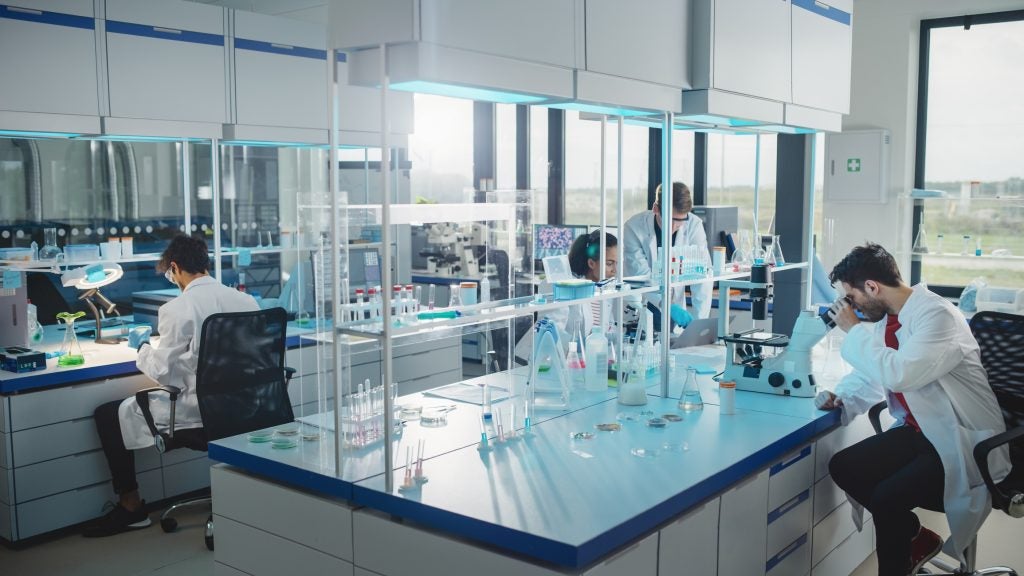
According to John Wilkinson of Eucomed, the environment for SMEs operating in Europe has become increasingly challenging, but this trend predates the current economic crisis. "Broadly speaking, across Europe, the perennial issue for SMEs is market access," explains Wilkinson. "That hasn't got any easier and in some respects it is getting more difficult.
"If you are an early-stage company, getting revenue traction is a huge obstacle. There are certain trends which are unhelpful in that area. The first is a tendency towards aggregated procurement, with large geographical areas coming together to source very large contracts. These scenarios are too high risk for SMEs and make it very unlikely that buyers are going to take the risk of sourcing from small companies."
The second trend is access to finance. As Wilkinson explains, if you are running a small enterprise, you want angel funding and individual investor funding, but that seems to be drying up because people have seen some hefty losses on the rest of their portfolios.
"The third element is working capital-related issues and the ability of relatively small companies to borrow from their banks to finance the day-to-day running of their businesses," says Wilkinson. "The credit crunch has undoubtedly had a huge effect on businesses in that area – credit lines are being pulled in and bankers are nervous. Unfortunately, the end result is that perfectly good companies can be pushed into insolvency through lack of cash."
The credit crunch has already created a different atmosphere in terms of financial regulation. Wilkinson says there is a palpable change of attitude permeating most European capitals but he warns that over-regulation will not help resolve the situation. An increase in regulation unsupported by real evidence will make life steadily more difficult for SMEs and large companies alike and increase the cost of care.
See Also:
Investment concerns
How well do you really know your competitors?
Access the most comprehensive Company Profiles on the market, powered by GlobalData. Save hours of research. Gain competitive edge.

Thank you!
Your download email will arrive shortly
Not ready to buy yet? Download a free sample
We are confident about the unique quality of our Company Profiles. However, we want you to make the most beneficial decision for your business, so we offer a free sample that you can download by submitting the below form
By GlobalDataAccording to the recent Q1 results from Germany, overall venture capital (VC) spending within the country fell 40% across all sectors. Although medical devices and therapeutics normally weather economic downturns better than other industries, VC investment in medical devices has declined by 14% compared to this time last year. To survive this economic climate, Wilkinson believes many SMEs will need to develop targeted business plans while simultaneously cutting costs. "SMEs should be focusing on markets that are typically friendlier towards new technologies," he says.
For example, the Netherlands and Scandinavia can be innovation-friendly markets that favour small to medium size enterprises, whereas other European markets under financial strain would be less likely to offer a suitable environment for investment. However, there are still opportunities within countries such as the UK, which can be less challenging in terms of structural/distribution channels than France or Germany.
In an attempt to address the challenges that SMEs across all industries face today, high hopes have been pinned on the introduction of a Small Business Act (SBA). "Like a lot of European legislation, initiatives such as the SBA are designed to set a tone as much as establish specific legislative vehicles. I think, in that context, it is an exercise to be very much welcomed," says Wilkinson. "The medical technology industry is particularly SME driven and the real groundbreaking innovation often takes place in small early stage companies. I think that creating an environment which encourages entrepreneurship is a step in the right direction.
"Focusing on public policy and making public procurement accessible for SMEs is also very important. There's a tendency in the public sector to be very risk averse and go with the established players because it is a much easier decision to justify. The public sector needs to be encouraged to be more creative on that front."
The SBA will also encourage national governments to create tax vehicles and tax incentives for people to invest in small companies. Broadly speaking, the SBA is a good initiative. But like many European initiatives, until something concrete comes out of it, no one knows if it will be effective or not.
"Now is the time, once and for all, to cement the needs of SMEs at the forefront of the E'"s business policy". That, the European Commission (EC) says, is the purpose of the Small Business Act (SBA).
The Act, formally agreed by member states in December 2008, comprises ten principles that the Commission says are essential to ensuring a "level playing field" for SMEs across the EU and to help improve legislation which in turn will encourage growth.
In essence, member states signing up to the Act have committed to improving access for SMEs to finance, bettering the regulatory environment and enhancing market access. "These priority measures are an integral part of the Commission's response to alleviate the negative impact of economic and financial crisis on enterprises, especially SMEs," says the EC.
On the topic of finance, the Act draws attention to the need for investment bank lending so that businesses can be better prepared for what might lie ahead. It also calls for improved cross-border venture capital, more simple access to EU funding and improving prompt payments.
Medical market fights back
Though Wilkinson believes the economic climate will deter some innovative companies from entering the market, in the longer term he expects the medical devices sector to continue to see solid growth.
"One of Eucomed's primary goals as an organisation is to inform policy makers," he adds. "I would say that we, and those in our sector, have to redouble our efforts to help people understand how new medical devices are developed and come to the market because if we don't, innovation in Europe is going to suffer. Medical devices are one of the few sectors in Europe which would be a banker for backing. We need to keep that machine churning out ideas and new technologies from the industrial perspective as well as from the patient perspective in Europe."
For Markus Schillo of the European Investment Fund (EIF), venture capital is only part of the overall investment picture for many SMEs. "Within the SME group, there are companies that need venture capital and can only be financed by venture capital," he says. "This group would include young companies trying to develop new ideas and bring out the latest product but not having any revenue stream to date.
"On the other hand, we have within the medical device sector a lot of mid-sized companies that have a revenue stream and have some products on the market. These companies could cover niche markets while others cover huge markets and generic products. They have revenue but need capital to develop innovations; in this sector you always need innovation if you want to remain competitive. For these companies there are other options for investment and funding that are not reliant on traditional venture capital.
"The venture capital market has really declined in the last year and VC companies are having difficulty raising money for investments," Schillo adds. "This is a direct result of the VC funds not having achieved their expected returns. A lot of the venture capital funds over the past ten to 12 years are still negative in their internal rate of return (IRR) and a lot of limited partners (LPs) are not eager to enter into the SME sector since they have lost a lot of money in last few years. There are some venture capital funds which have had good returns, positive net IRR, but most of the companies have either lost money or just broken even."
Changing focus
Despite this, Schillo believes there are opportunities for good companies to source venture capital. As he explains, there are a lot of VCs that have the money and there are a lot of VCs that have closed funds in the last 12 months and they are still providing money. Most importantly, a lot of them are looking for medtech and medical device companies to invest in.
Over the past ten to 12 years, the life science venture capital sector has experienced a shift in focus. Rather than investing exclusively in drug development and therapeutics, many VC companies are actively seeking medtech and medical device investments, which can often provide more reliable financial returns.
"Some funds are disappearing, but on the other hand, some of the funds which had a much stronger focus on therapeutics are looking increasingly towards medical devices", says Schillo. "Though the venture capital scene has not been very good over the last eight years in Europe, it is unlikely that it will worsen over the medium to long term."
For the many companies that do not require traditional venture capital, there are niche funds available. Some funds are looking for companies that are cash flow positive and need either financing for expansion, be it geographically or product wise, or for innovation that could not otherwise be achieved from their current revenue streams. These funds provide a bridge for the transition period from a pure venture finance company to a pure cash flow finance company, having less risk and lower upstart.
In the future, Schillo believes mezzanine funds may offer some of the greatest opportunity for SMEs to obtain capital. "There are mezzanine funds coming in Switzerland and Germany which look exclusively at life science deals," he says. "They are looking for companies who are not well established. It is not the classic bank mezzanine but more a risk-oriented mezzanine type of financing, going in the direction of venture capital. We hope to see more of these funds coming up. The EIF has a mezzanine fund-of-fund facility that started this year where we intend to support mezzanine funds in all sectors, but especially in the tech sector.
"The European medical device companies are very good," he continues. "They are very innovative, have a lot of good ideas and a lot of talented people. If you look over the past few decades, most of the companies in existence started here in Europe and were sold to US companies because the US is much stronger at the marketing phase. I think this division between the tasks will continue for a few more years.
Convergence and consumer needs
The medical device sector, like all sectors, is under immense pressure for cost savings, especially from the healthcare systems. Schillo thinks that in the long term the most successful companies – including SMEs –will be looking for convergence opportunities, where more and more interconnected products combine therapeutics with medical devices and medical devices with bio-IT. These are on the rise and in the end, highly innovative companies will be successful and secure investments.
"Investment trends in SMEs will never be black and white," Schillo adds. "Financing opportunities are on the decline right now, especially from the traditional bank and industry sources. The SMEs that will likely suffer from this will be bank financed companies which are family owned with turnovers of €5–10m per year. They have bank loans and need financing to improve innovative products. These companies are also hindered by their lack of interaction with VC companies. So, they will lack financing from classical sources such as bank mezzanine or loans and experience the biggest challenges to obtain financing to bring forward innovation."
Despite this, Schillo is quick to point out that these companies are normally unaffected by economic downturns because they focus on niche markets with high unmet needs. As he explains, these medical needs do not go away with the economic crisis.
The only companies that could be affected by the economic downturn are those that produce big and expensive stationary medical devices, used in hospitals and emergency rooms. There may be a reluctance to finance or invest in such large capital using products. For SMEs looking for venture capital, Schillo recommends getting in touch with players already active in the venture capital scene. However, it is not always easy. Some of the funds may appear to be focused on therapeutics, but they can be purely focused on medical devices.
"I know some funds that started with the idea some years ago, to finance drug development in focused stages," Schillo adds. "Today their portfolios may contain ten companies, nine of which are medical device companies. It's not easy to locate the right VCs to approach. But if you speak with people in the scene, most of them know which investors are interested in medical devices." Nearly all of the European VCs are looking at medical devices and medtech. The best idea is to speak with these companies and get a feeling for which VC would fit best with a product.
"From the EIF perspective, we are trying to facilitate fundraising," Schillo concludes. "We try to be on the lookout for funds that will provide a positive result for limited partners, general partners and the companies alike. The second thing EIF is doing is related to the mezzanine financing facility, which is intended to provide all types of mezzanine funds, be they the classic style or tech financing funds. The tech funds are quite unusual because there aren't very many companies who are looking at early-stage tech companies, but they will be. We hope to be able to finance more in this area in the future."





